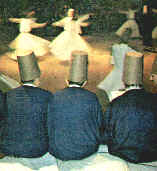|
|
Fanning out from the foothills of Taurus Mountains is Plain of Konya, one of the cradles of civilization. Here on the grasslands, in Neolithic times, the wild bulla and leopard roamed, the animals that became the cult figures of "Catal Hoyuk", the world's first city. This recently excavated site of 6500 BC, where houses were entered from roofs, lies 50 km South of Konya, near Cumra.
It was not until 12th century that Konya Plain experienced its second cultural Renaissance, when the city became the capital of Seljuk Turks.
Migrating from the steppes of Central Asia, Seljuk served Byzantines with crushing defeat in 1071 at Malazgirt, which opened the floodgates to Turkish settlement of Anatolia. Under the enlightened rule of Sultan Alaeddin Keykubad, Seljuk culture reached its zenith in 13th century Konya.
Seljuk art strikes perfect balance between purity of line and intricacy of decoration, as reflected by Konya's many beautiful buildings, such as Alaeddin Mosque, Karatay Medrese and Ince Minare Madrese.
In this atmosphere, where learning and art flourished, one of the great Moslem mystic movements was born. This sect, known to West as Whirling Dervishes of Konya, was founded by Melvana Jelaleddin Rumi, mystic poet, whose tolerance and humanity were quite exceptional for his age. There was not trace of fanaticism in Rumi, and he wished to encompass all men in his faith based on love.
As the symbol of the shedding of earthly ties, Rumi devised the whirling dance, accompanied by the ethereal sound of the reed flute. This whirling dance can still be seen in December, during "Melvana Festival".
Rumi lies buried in striking green tiled turbe or mausoleum, which is site of Moslem pilgrimage. Attached to the mausoleum is the former seminary of Dervish sect, which is now museum of articles belonging to the order.

Whirling Dervishes
|
|

